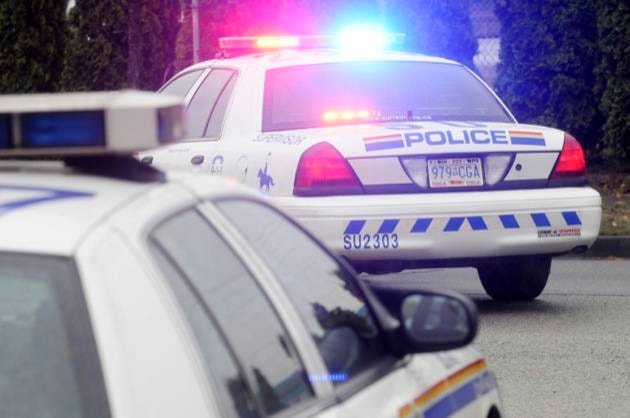The City of Prince Rupert saw significant decreases in its crime severity index (CSI) and non-violent crime severity index (NVCSI) in 2021, while its violent crime severity index (VCSI) remained more or less steady.
Data released by Statistics Canada (StatCan) July 25 indicate the CSI for 2021 was 159.17 compared to 187.48 in 2020, a 15.10 per cent decline.
Similarly, the NVCSI decreased 24.99 per from 149.97 to 112.49.
The VCSI was down just slightly (0.9 per cent) from 290.52 to 287.90.
Along with the numbers being down for Prince Rupert, the town’s relative position among B.C. municipalities was also down in CSI and NVCSI.
Of the 181 police jurisdictions in British Columbia for which 2021 police-reported statistics are now available, Prince Rupert ranked 22nd in CSI, 44th in NVCSI down from 18th and 23rd respectively.
Even with the slight decrease in VCSI, however, Rupert jumped three spots from 10th in the province in 2020 to seventh last year.
Prince Rupert rural — which includes Port Edward — ranked 45th in overall CSI.
MORE NEWS: Prince Rupert boil water notice downgraded to water quality advisory
The Prince Rupert municipal numbers mark the first time since 2016 that the index has gone down.
Prince Rupert RCMP suggested at least some of the downturn in crime in Rupert and across Canada was unrelated to their efforts, the detachment nevertheless credited the local members with a job well done.
“Although COVID-19, and its subsequent restrictions, can be attributed to some of the numbers being down in not only Prince Rupert but all of Canada, we are still pleased with the work our front line officers are doing,” said spokesperson Const. Brody Himrech in an email. “The work they put in every day, advocating for victims and investigating crimes that occur in the city, should be commended.”
The City of Prince Rupert has said city council would also provide a statement.
For the province as a whole, the CSI was down by 4.61 per cent and the NVCSI decreased 7.55 per cent, The VCSI, however, jumped 4.32.
Smaller municipalities have always been skeptical of the meaningfulness of the crime severity indices noting that a single murder, for example, or a particularly troublesome hospital patient, can skew the numbers dramatically for a city of only 12,300 people and in any given year might not necessarily reflect the overall safety of the community.
StatCan acknowledges that taken discreetly, the numbers can be misleading, but nevertheless maintains they are useful in tracking crime trends and the relative safety of communities.
“The Crime Severity Index is also a tool for measuring the increase or decrease in the severity of crime over time in any given jurisdiction, such as provinces and territories, and for comparing the seriousness of crime among jurisdictions,” an article on the StatCan website states.
“Over time, police-reported crime rates have generally been higher in the west and north than in eastern and central regions of the country. This is also true for crime severity, as measured by the new Crime Severity Index.”
While a decline in the indices is always welcomed by city officials, Prince Rupert continues to run significantly above the provincial average.
Comparing Prince Rupert to national and provincial data for the period 2017-2021, the city’s five-year average CSI of 161.6 is more than double the Canadian average of 75.3 and more than 60 per cent higher than B.C.’s 94.09 average for the same period.
The Prince Rupert average is also very significantly higher than Lethbridge, Alta.’s 2021 CSI of 128.65. Last year, Lethbridge once again ranked as Canada’s most dangerous census metropolitan area (CMA), or city with more than 100,000 population.
Fort St. James (rural) ranked number one among municipalities in the province in 2021 with a CSI of 293.52, up 3.2 per cent from the year before.
Fort St. James also took top spot for NVCSI at 281.49.
Hope (rural) claimed the highest VCSI in the province at 433.36.
The Top 10 among all reporting police jurisdictions in B.C. were: Fort St. James (rural), Hope (rural), Quesnel, Prince George, Agassiz (rural), Williams Lake, Merritt, Port Hardy (rural), Penticton and Northern Rockies (rural).
B.C.’s big cities, Kelowna, Vancouver, Abbotsford-Mission and Victoria ranked second, 10th, 13th and 18th respectively among Canada’s 37 CMAs.
The Top 5 CMAs in the country were: Lethbridge; Kelowna; Winnipeg, Man.; Moncton, N.B.; and Regina, Sask.
StatCan started tracking the crime severity indices as a better reflection of the relative safety of communities in 1998.
Nearly 40 per cent of police-reported crimes in Canada are theft under $5,000 and mischief. The calculation of the severity indices gives lesser weight to these types of crimes and more to violent and serious crimes.
editor@interior-news.com
Like us on Facebook and follow us on Twitter
